A Danish drama courtesy of SBS. The title translates as Murk.
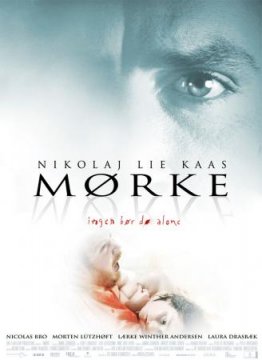
It is a study in ambiguity and the viewer’s sympathies flow back and forth between Jacob and Anker. Is Jacob, the tall dark, handsome, and assured Copenhagen journalist, an obsessive nut case, while the fat, ugly, placid farmer Anker the victim of circumstances? Or is Anker a devious serial murderer several steps ahead of Jacob, who was right about him all along? Most of the action occurs in the village of Murk (indeed) in Jutland, flat, wet, brooding skies, the smell of farms (manure)…. Be glad there is no Smell-O-Vision. [Remember that? Just wait; it will come again.]

The local plod cannot believe Jacob’s wild accusations, and he certainly is unstable by then. But Anker is on a mission and he cannot deviate….
With the resolution at the end, a number of loose ends arise: Did Hanne make the last phone call? Where is the razor blade or knife?
Maybe we need a little more of Anker to understand the mission. Is it because he, too, is outcast by his looks and so knows what his victims really want even if they never say it, may not ever say it. Why did Jacob keep waking up to answer the phone that did not ring?

In Denmark, one of the most regulated societies, could a serial widower like Anker pass unnoticed by the police, media, and the vigilantes of the blogosphere? Still less in the small villages where he passed. But what if he could….
Allan Massie, Death in Bordeaux (2010)
Set in that wine capital in the period May – September 1940 when the world fell in on France.

In April 1940 in far away Bordeaux everyone laughed at the Phoney War and by September 1940 Jews went into hiding, tobacco went into the black market, jackboots were heard everyday and night, and an air of foreboding enveloped one and all. The night creatures emerged, thugs, hooligans, bullies, chancers, and their ilk. Decent people hid away as much as possible.
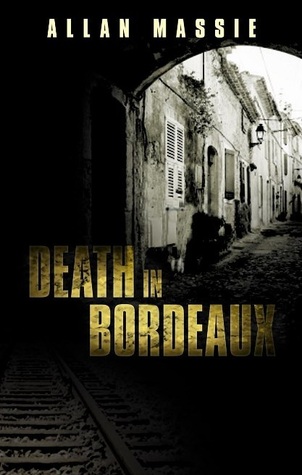
Bordeaux was in Occupied France and as a sea port it was especially occupied to keep people in as much as out, but it was administered by the French government that took up residence in Vichy.
The longstanding practice of posting newly promoted police officers away from home, the better to ensure their impartiality, meant that the Police Judiciare in Bordeaux had Alsatians who are half-German and half-French. Aside: The movement of the border in Alsace meant that in World War I Robert Schumann, later a French foreign minister, was conscripted into the German army and in World War II the French army, experiences that made him a life long proponent of European union. Back to the story.
The Gendarmes find a mutilated body and Inspector Jean Lannes arrives to investigate. There are too few threads to follow, and then too many. Political interference adds to the complications. Those problems fade into insignificance with the Defeat and the Capitulation in June 1940 and the subsequent arrival of the Germans. Yet Lannes continues to probe and push. His offsider Moncerre is a pit-bull on a chain, and Lannes has to restrain him at time. ‘Not now, Mon Brave. Our time will come. Be patient.’
This is the first of a trilogy and the case remains open at the end. The book is well written and includes Lannes’s home life, his fears for his children, his wife’s perseverance in the face of the unknown, the mixed attitudes of the Alsatians, the plight of Jews, the Stoicism of many, and the naked opportunism of others .…. All rendered in clear prose.
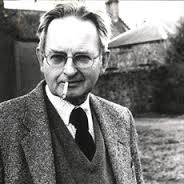 Allan Massie
Allan Massie
Though it perhaps lacks the stifling atmosphere, and mastery of period detail, that Robert Janes conjures in the same period, it is much easier to read and follow than Janes’s cryptic prose, fractured syntax, and loose grammar.
I particularly liked Lannes instinctive response when on an official visit to Vichy he saw Maréchal Pétain walking in a public garden: Verdun. Respect. Salute. One old soldier pays tribute to another. Lannes has no taste for collaboration and sees no honour in defeat, but Pétain has more claim to respect than so many others.
Pedant’s note. The Vichy regime had administrative responsibility for the whole of France including the Occupied Zone and Paris. The reality of that attenuated with time and tide, but in the first days it was real.
Hitler’s New Order of Europe and in parallel Pétain’s National Revolution seemed credible in that time and place. The war was all but over. England would either succumb or make peace to save itself now that it no longer had French allies to die for it. The Third Republic and the French Revolution that it embodied had failed miserably. Time to turn from the past to the future. The young men and women in Lannes’s social, family, and professional circles are confused, dazzled, repelled, and attracted by it all. Will they do something stupid? Dangerous? Almost certainly. But which is more stupid and more dangerous defying the new reality or complying with it?
While there is much to’ing and fro’ing in Bordeaux, street names, cafés, hotels, Spanish Republican refuges, French refuges who arrive just before the Wehrmacht, the two most noteworthy events to happen in Bordeaux in the period the book covers are passed in silence. The first is the Dunkirk evacuation and the second is the arrival of the French government of Paul Reynaud from Paris. Let me explain.
Though distant Dunkirk is mentioned nothing more is said. Yet of the 350,000 soldiers evacuated from the Pas de Calais more than 100,000 were French. The war was still on and upon arrival in England they were put on trains and transported to Bristol, Swansea, and other ports where they were shipped to Bordeaux, on the assumption that the war would go on. All of this was done in a few days. They had no gear or weapons and the chain of command was gone, but they were able-bodied young men with military discipline and combat experience. I am not sure what happened to them in Bordeaux. I expect the malaise of defeat made it impossible for anything constructive to be done. Still the influx of 100,000 men with no shelter, food, etc. would surely have been remarkable.
Second, the Reynaud government declared Paris an open city in the hope that the Germans would not then bomb or shell it. That worked. It went on the road and stopped once or twice along the way before arriving in Bordeaux where it held its last meetings before it dissipated.
‘Not by Chance’ (2007) Brazil
Another gem from SBS world movies, which I recorded years ago and just got around to watching. A feature film from Brazil without slums, guns, drugs, or violence, it is a rarity indeed.

Brazilian film makers seem as fixated on guns as the prepubescent boys of Hollywood.
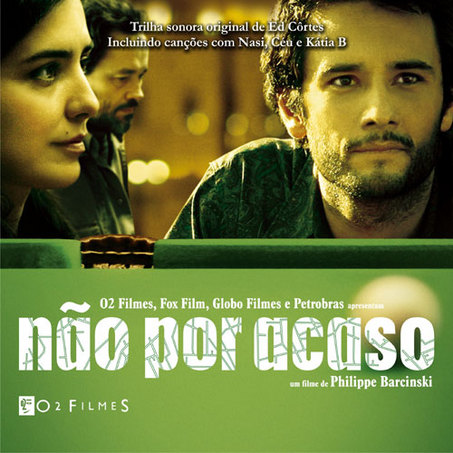
The film offers a set of character studies, and a daring one at that for the characters neither intersect nor interact, though we keep expecting that they will since that is the film convention invoked. Instead São Paulo Stories sums it up. Along the way there is a travelogue of São Paulo, much of it from the air, Google earth, and the streets, too. It moves slowly. The director is in no hurry and establishes the place before the people.
 Centro, São Paulo
Centro, São Paulo
Three sad, frustrated, and bereaved people make the best of it and get on with life. These are real people, not the products of the adolescent mind of a script writer. What a treat. By the end, Ênio reunites with his daughter. Pedro comes to terms with his grief. Lúcia quits her job and finds the cloud lifting.
There is one surprising almost staggering moment, and I suppose this is a spoiler of sorts. Be warned.
When Pedro and Lúcia pose for a picture against a great vista it seems they are reaching an understanding that they can help one another. Then later she discovers, by chance, that he has photoshopped her out of the picture and inserted his deceased girlfriend, and indeed perhaps the whole trip to the vista and the photograph had the purpose of getting that pose so that she, Lúcia, could be removed, or so she might well conclude. She is, to say the least, stunned, hurt, angry…. How would you liked to be photoshopped out of a picture by someone you cared about?
The opening titles and then first scenes establish the thesis. Oh, yes, there is a thesis in the film. It is that we and all around us flow through time and space, here illustrated with São Paulo’s road traffic.
 ” The traffic
” The traffic
 The traffic controller, Ênio, at work
The traffic controller, Ênio, at work
Fluid dynamics provides a model for both traffic flow, and human interaction. There is no intent and yet there is order. Chance creates meaning, I would say, contrary to the title, in Portuguese ‘Não Por Acaso’ which is literally ‘Not by Chance.’ Whether that phrase has an idiomatic meaning in Portuguese, I cannot say.
The effort of Pedro to plan ahead his pool games, and of Ênio to foresee and avert traffic jams, and Lúcia to predict the commodities market, these actions can influence events, they can divert the flow, but they cannot change the fundamental dynamic. The sequence when Pedro realises his plan for the pool game is wonderfully rendered. It is the payoff of earlier preparations both by Pedro and the film maker.
 Philippe Barcinski
Philippe Barcinski
This film is Philippe Barcinski’s first feature length movie and yet is assured and controlled as if by an old pro.
The adventure of the Varidesk.
Varidesk has landed. Varidesk is in use! Varidesk?
In 1979 I read Scott Berg’s biography of ‘Maxwell Perkins: Editor of Genius’ (1978). On Perkins’s genius more at the end along with some other explanations of abbreviations and unusual terms used below.
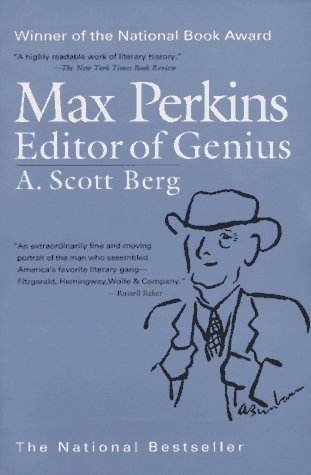
Perkins worked standing up.
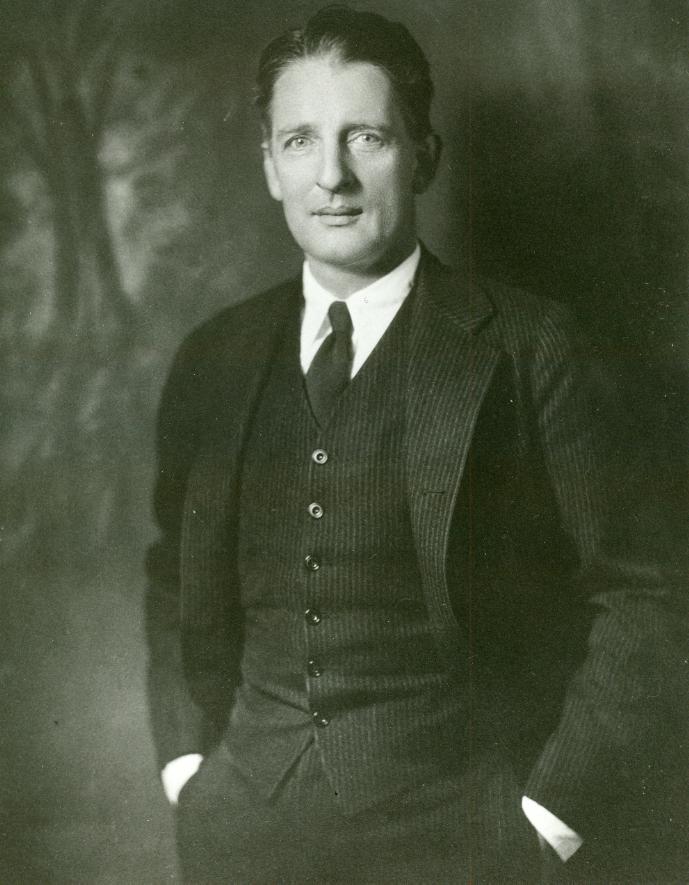 Max Perkins
Max Perkins
When he joined Scribner’s one of the conditions he stipulated in his contract (I am trusting my memory on this, so check away) was that a standing desk be built into his office by the company. He may have used one earlier either as a journalist or accountant; this I cannot remember.
The standing desk was common in the 19th Century. Scrooge did not provide a chair for Bob Cratchit.
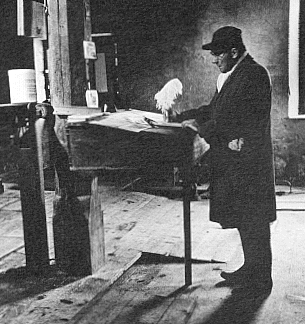
Aware of standing desks, over the years I have seen a few. When personal computers were mounted on stands, as they were in the 1990s in the DOS days, I arranged the first one I got so that I stood at it for a few days but the stand just did not accommodate that and I gave up; the mature thing to do in that case. Of late I have tried standing at my desk and tilting the iMac screen up, and that works but my arms just are not long enough to do more than poke the keyboard or jiggle the mouse, which is enough when watching the TF2 News but nothing else.
From time to time I have read about standing desks as an antidote for we screen lumps who sit in front of a computer for hours and hours a day. I recognise myself in that characterisation. I have tried other remedies for the sedentary day. For years I put the landline telephone on a book shelf some feet from my chair so I had to get up to use it and stand while doing so. Good as far as it went. Now I have no landline and the iPhone never goes cold. I dare not put it somewhere because there it would remain until it rang. That is, I would forget it when it out of sight and go out without it. How then to ferret out crossword puzzle answers or reply when High Command calls?
Once I had classes to go to several times a week and (too) many committee meetings to attend. These got me up, and I always stood in classes for an hour or three at a time. The committee meetings were often in the quadrangle, a short hike away. The best part of these meetings was the walk there, but walking back was not so good since I often replayed the nonsense in my mind as I did so. I heard some of the most astoundingly bad arguments in some of the meetings. Really, the excuses students made for late work were better. But I digress…and find it quite enjoyable. I also had to go to the library a lot more than I do now though I still go.
These days there are no classes and committees and few library visits to stir me. I had thought to trek each day to a nearby delicatessen for lunch but that did not take. I had thought to go to one of the innumerable nearby coffees shops for an afternoon brew everyday, but… well, I don’t very often. When I have a visitor the yes but that is once a week at most. Sedentary. That is the word.
The health Nazis have again been extolling standing desks I noticed. A few journalist have tried one out and squeezed a feature piece out of it in one of the local rags. None of these accounts cover more than a week of using one and so hardly convincing, albeit a week is an eternity in a journalist’s attention span.
Most of the examples of standing desks are just that. A special purpose desk at which one stands, at which one can only stand. There is no sit option. It is all or nothing. Toss out my desk (and it is a special one, not from IKEA) and get a standing desk. If it does not work out, recover the desk. Huh? How would any of that work. Not well is the short answer. Yes, I know I could also pitch out my desk chair and get a stool to perch on, but perching is not sitting.
(Aside, RyanAir tried to get approval in the United Kingdom for flying passengers standing up and strapped to seat backs. That failed but I am sure it will come again, like Mitt Romney [just wait and see, remember cockroaches can survive for months on their backs]. If you think I am clever enough to have made that up, well thank you for the flattery, but if you look hard enough on the web confirmation will be found.)
Then along came Varidesk. [Sound of trumpets!]
One of the periodic surveys of the ills of sitting and the virtues of standing came along. There among the treadmill desks where the user powers the cell phone charger pacing along while typing away up top included the Varidesk. It combines a standing option with a sitting option. That got my attention.
(Best leave the treadmill desk in silence.)

I had a look at the web site, more than once, and now that clever user specific software is putting Varidesk advertisements all over the Safari screen, and Facebook, too. That advertising annoyed me but I am big enough to cope with annoyance, hardened by the experience of all those committees mentioned above. I measured. I posted questions on the Varidesk website which were quickly and effectively answered. I pondered some more. I discussed it with the Great One. I went around in Libra circles. That was in 2014. I delayed over Christmas and New Year.
Then I resolved that in 2015 I would get one and use it. My thinking being that the flexibility it offered of converting from standing to sitting and back meant I did not have to stand all day everyday. If I used it standing an hour a day, and yes I will time it for external discipline, I would be doing myself some good.
Come the new year I found a few reasons to put it off, but then in a mad moment I placed the order on the website, and bang! A New Years’ resolution fulfilled! Within a couple of hours a notice hit the email inbox to say it was on the way from a warehouse in Brisbane. I ordered a big one to accommodate the two monitors I use, figuring that half measures would be an excuse not to stand at all I closed that option. What I ordered was a brute of 48 inches in length and 50+ pounds in weight. (Unimetricians will have to convert that for themselves; I cannot be bothered now because I am in the narrative flow.) Then I got an email from the courier company saying it was en route. All good. Two monitors? One for the chapter text and the other for the references in EndNote (or sometime as a cricket match).
Here is the master plan. I ordered it to be delivered to the private office I use around the corner on the grounds that the courier would carry the brute up the one flight of 15 stairs plus the five at the front door. That was not something I wanted to do. It is easier to get things delivered to home since there is more often someone there at the times couriers arrive (often 7 am). When I ordered it for the office I filled out the box for special instructions, asking for a call ahead because if I am not in the office I am usually only a few minutes away [home, gym, park, coffee shop], but experience told me no one pays any attention to those boxes, which are there to comply with ISO9000 certification, not to be used. Still do what you can do.
Then, one day upon arrival at the office I found the courier’s card. I had missed him by 15 minutes. Blast it! I had assumed that the road trip from Brisbane would take another day and had made no special effort to be at the office early on that day.
I went to the courier’s website and rescheduled for a day I was sure to could stay in office all day. Fine. Expectations built. Then the day before the appointed day I got an email telling me it would be delivered that day! Crikey! I re-arranged some tasks to be sure that I could sit there in expectation….until 6 pm before giving up and going home. Nothing. Now what? Though there was no card had I somehow missed it again? I checked the website again and found a plethora of largely incomprehensible tracking information that left me none the wiser about what, if anything, had happened that day.
The next day about mid-morning I got another email saying it would be delivered that day by 5 pm. That sound very definite and I took root in the office with the balcony doors on the street wide open. Every time I heard a diesel engine throb I bolted to the balcony to espy the delivery truck. A surprisingly large number of diesel trucks traverse Erskineville Road and the tailback of traffic puts them within my earshot. Up and down I went. Not sedentary that day, I can tell you! Whereas on most office days I get 5000 steps that day I got 8000. (Yes, I measure my sedentariness with a step counter. Ever since I did a term paper on the Cartesian method in graduate school I have been a busy little measurer.) Up and down and at 4 pm nothing. It was Friday and Monday would be the next time it might come. Up and down I went.
Then [just when all seemed lost] …I heard another diesel in idle, much horn honking and I looked onto the street and saw a five ton truck double parked, not quite blocking traffic but passing it was challenge for eye-hand coordination with inches to spare. The truck bore no logo. There was a driver in an orange visibility vest walking around the truck and along the street looking for numbers. No GPS? I yelled at him. I yelled again. He looked up and we communicated over the street noise as peak hour traffic increased. He was the Varidesk fairy come to deliver. He wanted to drop it at the door but I played hard to get and told him I could buzz him in but could not leave the room. A lie. I wanted him to lug the brute upstairs and when I saw it come out of the truck I knew I was right. Some drivers might have resisted but this one did not, and in time he came along, after shanghaiing a passer-by to help him carry it upstairs. I signed his chit, gave him a drink of cold water (it was a hot day), and $10 for his trouble. Off he went.
I surveyed the massive box.

If the Varidesk within is four feet, the box was five feet long. Maybe a little more. It was by now the witching hour and I did not want to start unpacking it, so I left it and when home to report. ‘Brute?’ The box says 38.5 kilograms. That is over the standard airline limit for a heavy bag of 70 lbs.
The next day, Saturday, I dragged the beast near the desk, unpacked, and arrayed it. I managed to lift it onto the desk by using steps and lifting one end at a time. The steps were a foot stool and then a chair. And a lot sooner than I expected I had it in place and the computer back at work. I shifted the computer gear onto the book shelf behind the desk and then slid it onto the Varidesk. I did not have to turn anything off.
Unpacking it was a task. It was well cushioned by many specially designed pieces of double ribbed cardboard. Once all the packing was removed, I eased it out. I have kept the packaging. When I asked on the website if there was someplace where I could see a Varidesk in action I was told to keep the packaging and send it back if I did not like it because there is no display model in Sydney, or anywhere else. That is the business plan. The testimonials I had read on the Varidesk website were good and more varied and substantial than the journalistic accounts but all them referred to a month’s use and no more. That seemed too short to convince me, a honeymoon not a marriage.
I got it in place. I have moved it up and I have moved it down. Several times.
I typed this standing to this point and I have now shifted to sitting. When it is elevated there are several different locked levels and I am testing them to find the one that works best for me. I will also have to get used to carefully bending down to open desk drawers so as not to clonk my head on straightening up. The same drill that is needed with the rear hatch of the Mazda.
See!
I will use my red owl egg timer to track my use. Did I say that already?

There is also a companion app on the Varidesk website to time sitting and standing and I will explore that and report another time.
Bledders can expect further reports on Varidesk. Stay tuned.
The experience with the courier could have been worse. One courier company I have experienced drops the card without ringing the bell and dumps all deliveries at the nearest depot. Doing it this way means the courier moves faster and basically makes only one stop per depot zone. It thus offers a cheaper price for this lack of service. It also means I have to lug home the object of my desire from the depot, and sometimes that is quite a load. In this case impossible, doubly so because the local depot, a newsagent on King Street, is nearly inaccessible by car. It is no one’s job at the depot to help a punter get the goods into the car. That is very clear. To see the pile of boxes in the Aladdin’s cave at the depot is to understand, partly, why. There would be no end to it.
Explanatory Notes.
Perkins was the Scribner’s editor who discovered and brought to publication novels by William Faulkner, Scott Fitzgerald, and Tom Wolfe. Readers owe him lot. None of these three was easy to work with or to convince Scribners’ board to accept. Faulkner’s little world of Yoknapatawpha County did not light up New York City’s masters of culture. Fitzgerald never hit a deadline no matter how many times it had been extended and advances ran through his fingers as though he were one the rich characters in his novels. Worst of all was Wolfe whose prose poured like Niagara Falls, 900,000 words at a time to be cut into a novel a quarter that size by Perkins.
DOS is Disc Operating System that spun the disc and blinked a green light long before Windows.
‘Unimetricians’ are those who know only the metric system. Me, I am bimetric and can do inches or centimetres, pounds or kilogram.
TF2 is the Télévision Francaise 2, or just France 2. I record the evening news from SBS and watch it as my French lesson three or four times a week, sometimes more, sometimes less. It runs on SBS without subtitles.
Thomas Wolfe was a big man, nearly as big as his books. He was 6’ 9” and wrote on a standing desk of his own, an ice box. I have seen pictures of his composing in long hand on the refrigerator top and flicking the pages into a crate. He would do this for 36 hours at a time and then fall to the kitchen floor and sleep on a pillow he left there for that purpose. This crate might run to several thousand pages which would go to Perkins for typing and editing! Out of this maelstrom came ‘Look Homeward, Angel,’ ‘Of Time and the River,’ ‘Web and the Rock,’ and ‘You can’t go home again.’ Each runs to 500 pages after the Perkins fine tooth comb.
‘Falafel’ (2006) Lebanon
All trip but no arrival. Wait! That is not quite right. There is a charming end.
Toufic wanders around Beirut by night, leaving work at an internet café to got to a party where he hopes to meet Yasmina. He stops home to change clothes (one grungy tee-shirt for another) where he has a loving mother and a younger brother who worships him and a father who provides well for them all. All perfectly Main Street. On the way, while fuelling his moped he sees in the middle distance a kidnapping, from which he averts his eyes once he (and the viewer) realises what is happening. He crosses the city, past the neon lights, the lines of sedans at traffic lights, fast food joints, bars. Buses with workers going home. It could be a city anywhere. Note it is all set at night and so many of the images are dark, very dark.

At the party in a private apartment the misadventures begin when one of his buddies flies into a jealous rage and has to be placated. There is an argument in the parking lot over a dented fender. One of the antagonist deliberately batters his moped.
Testosterone now rising, the mild mannered Tou seeks out a weapon with which to deal with this malefactor. He travels on the damaged moped along the famous Corniche around the bay. He encounters a friendly garage owner who helps out with the moped, an officious paramilitary policeman who is heavily armed for a traffic cop, an arms dealer who pines for the good old days when the private armies bought big-time, some unpleasant goons, while his buddy, now back to normal, seeks him out to stop him doing anything stupid.
There is much back and forth and in the end Tou, though he now has a weapon, goes home and plays with his younger brother, and the two of them fall asleep. The End.
While the story in the foreground is a staple ‘what Toc did last night’ it is placed in the context of street kidnappings, trigger happy cops, and psychotic merchants of death. It was made fifteen years after the last war fought in Lebanon and about four years before the next one, a time of relative calm and normality. These twenty somethings lust after one another, dance to the latest European craze, talk of American block buster movies, the girls strut their stuff, and the lads admire it up close. They speak Arabic but act like Europeans in every way. See, normal. Yet just a few feet outside the bubble are the guns, kidnappers, paramilitary thugs, and street gangs looking for easy meat. There are few words of French with some visitors.
 Writer and director Michel Kammoun
Writer and director Michel Kammoun
It had a surprisingly good but superficial and mostly descriptive review in ‘Variety’ I found on the IMDB.
I recorded it from SBS because of its origin in Lebanon at a time of (relative) normality.
‘Meeting the Demands of Reason: The Life and Thought of Andrei Sakharov’ (2009) by Jay Bergman
Andrei Sakharov designed and built hydrogen bombs for the Soviet Union in the 1950s and 1960s. He also dissented from the regime during much of that time until he became a full-time dissident in the latter 1960s. I have wondered how he compared to Robert Oppenheimer and this is a start in finding out. Strangely enough Sakharov loomed larger on my horizon than Oppenheimer because Sakharov was a celebrity dissident in the 1960s, repeatedly in ‘Time’ magazine and in the highbrow publications of the Centre for Democratic Institution from which I drank at the time, whereas Oppenheimer was a man of the past.
 Andrei Sakharov, 1989
Andrei Sakharov, 1989
Sakharov was man and boy Soviet, knowing no other way of life like the millions of others. His family was secure and comfortable by the standards of the time and place, though Stalin’s purges and the myriad of local purges that cascaded onward in time caught up with members of his family, first among the older generation of uncles, and then aunts whose crime was to have married that uncle, and then Sakharov’s generation, an arrest here, a deportation there. Even so his loyalty to the regime was unalloyed.
He grew up in a musical family, while his father was a successful physics teacher who wrote and published numerous approved high school texts on the subject. Sakharov’s interest in and aptitude for mathematics blossomed and he went to the head of the class and stayed there. Having just seen ‘The Imitation Game’ (reviewed elsewhere on this blog) I compared him to Alan Turing.
He failed the physical examination for the Soviet army in World War II; consider for a moment how low that standard must have been. He had an irregular heart beat most of his life. Instead he signed up to work in an ordinance factory. There his capacity to reduce confused and confusing reality to rows of numbers led him to several innovations which made his name as a coming man.
One example suffices. To test artillery shells for defects the method was manual, in every new batch several shells were dusted and examined with a magnifying glass for cracks in the casing. Until that test was passed the batch waited. If one crack was found the whole batch was rejected. Neither effective nor efficient. Sakharov devised a laser to pass over each shell individually and ping on cracks so that individual shells could be rejected but not whole batches and the production line kept moving the whole time. I have take quite a few liberties in this description to make it accessible; as they say in movie credits, ‘based on a true story.’ In the same spirit that could be motto for Fox News rather than that ironic statement ‘Fair and Factual.’ It is ironic isn’t it?
There is one of similarity to Turing. Both turned to automation for tasks that previously had been done by hand, just as the machine gun replaced the bolt action rifle.
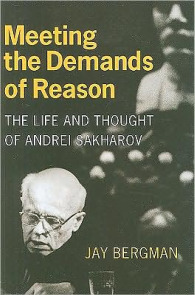
Sakharov’s change from cog in the mighty wheel to dissident came slowly. He saw neighbours and colleagues foully treated and it could not all be explained by the war. Jews were made victim. A loose word about comrade number one, and … Exactly, no one quite knew.
Moreover, when he left the laboratory for the factory and later the weapons plants, which were really cities in themselves, he saw how badly treated workers and their families were, despite the endless rhetoric of the workers paradise. Also he choked on the ritualistic evocation of Marxism-Leninism at every official juncture. Just as many of us have choked on the empty and ritualistic evocation of God on public occasions like the Gallipoli ceremony.
He was a brilliant scientist, a claim reiterated many times in these pages without a satisfactory explanation of this brilliance or how it was recognised as brilliance by all the dimwits around him. Well, they have to be dimwits if they did not reject the regime per Bergman.
Gradually, Sakharov tried to use the status he had to help individuals and in time he realised that the Stalinist regime was the problem, and that it rolled on even after its creator died. He retained a faith in the Soviet promise but thought it perverted by Stalin. At first his supposition was that the Tsar did not know, in the old Russian proverb, only slowly concluding that the Tsar was the problem, then Tsarism including the people who wanted a Tsar, call them the Tsarists.
Though his interventions were few, carefully judged to appeal to Soviet values, and argued on pragmatic grounds they yielded a vigorous reaction. He was named as errant in public by Chairman Khrushchev himself.
In time he realised there were systematic and systemic failings and those he saw first and most clearly and which he quantified were the deaths and defects causes by the radiation of atmospheric testing of hydrogen weapons. He compiled spreadsheets of data that showed approximately 10,000 deaths caused over three generations by the radiation released in a single atmospheric test. He thus argued for underground testings, which had technical limitations, in his immediate environment, then at closed and secret scientific conferences, and then by writing to the Party Chairman.

Yikes, this drumbeat was readily characterised as unpatriotic, just as Edward Teller tried to portray all other others who lacked his one-eyed enthusiasm for ever bigger bombs as UnAmerican.
His ground shifted from urging reforms on pragmatic grounds to improve Soviet society to urging reforms because they were morally right. This put him beyond the pale; it put him in Groky four hundred miles east of Moscow.
There is a personal element as well. Sakharov saw and despaired at medical treatment his first wife Klava received. Doctors at elite clinics could not interpret X-Rays to his mind. She died in a great pain as he watched. Perhaps it could happen anywhere but it happened to him and it was another fissure in his allegiance to the Soviet Union.
One of the things that tied Sakharov to the Soviet regime withal his objections was the need for weapons not because of the Cold War with the West but because of Mao’s China and its erratic course as perceived from Moscow. That was a new perspective to me.
One of the things that loosened the tie to the Soviet regime was the Prague Spring of 1968. We read that many Soviet dissidents saw in those Czechoslovakian changes a hopeful future for the Soviet Union itself. When that door slammed shut in August 1968, those Soviet dissidents who championed reform from within communism lost hope. It was proof that communism could not change. This was another new perspective to me and a striking one due to our recent visit to Prague and our tours of its communist relics.
The many and varied dissidents could not agree among themselves and spent at least as much time and effort in undermining each other as working for reform of the Soviet way. (Sounds familiar to any seasoned committeeman.) They tried to organise themselves in the way they knew, a central committee with a rigid hierarchy….and that did not work. All of this backbiting made it easy for the regime to isolate and pick off dissidents.
He became a supporter of any and all dissident causes from ethnic revanchism to free masonry, seemingly without discrimination. His enemy’s enemy became his friend. Anyone who dissented from the Soviet way was his friend, or so it must have seemed to the Communist authorities. He also demonstrated a political naiveté born of his sheltered existence in believing that some how all these dissenters could combine within the abstraction of human rights, when some of them did not want human rights, they wanted their land and would gladly kill to get it! See post-Soviet history for the data.
He seems to have had a charmed life in that even when stripped of his scientific duties, he was still paid, retained his apartment, had a limousine and driver at his service, was available to all manner of foreign journalists in Moscow to whom he spoke ever more freely, including offering advice to the Reagan administration on how to negotiate with the Soviet leadership – rather like Jane Fonda encouraging the North Vietnamese to kill more American draftees to shorten the war. (Oh, yes she did.) For a man who was oppressed and repressed he published a very great deal in the way of political opinion, a bibliography of which runs from page 413 to page 431.
Mikhail Gorbachev appeared but for Sakharov he was too little, too late. Sakharov wanted everything now, and Gorbachev was carrying a heavy load on thin ice. That Gorbachev let him return to Moscow and appointed him to ceremonial offices was accepted but it did not temper Sakharov who but now seems unable to trust anyone or give anyone else credit for good intentions. Then Sakharov died and Gorbachev offered his widowed second wife, Yelena Bonner, a state funeral which she accepted. That became a Saint Bartholomew’s circus for dissidents, for apparatchiks who wanted a halo, for Western journalists looking for easy copy.
I should have said earlier that Bonner, of Jewish descendent, did much to focus Sakharov’s political interests. She had a much more general and coherent view of the Soviet Union in contrast to Sakharov’s piecemeal perspective. She became a comrade in arms, as she appeared to be at the time in their hunger strikes.
 Yelena Bonner
Yelena Bonner
Returning to the comparison with Oppenheimer, this book being my only source, it is not clear to me if Sakharov had management responsibility akin to Oppenheimer’s. None are explicitly mentioned though Sakharov is occasionally referred to as ‘Director’ of this project or that and the word implies management to some degree.
The book was a hard slog. The implied thesis behind the title seems to come straight from Karl Popper that science and democracy unite in falsifiability. Neither assures perfection but each can falsify mistakes through rational argument and evidence. Ergo, the more rational and scientific Sakharov was, the more he had to reject (falsify) the Soviet system and make his way (intellectually) to democracy. Oh dear, does that mean the Soviet scientists who did not move this way must not have been rational and scientific after all, and likewise that the Western scientists who pined for authoritarian government, hello Ed Teller, were not either. Such consistencies do not worry the author.
Our author has it that one of Sakharov’s deepest concerns with the Soviet Union was the easy and irrational way in which scientific arguments and evidence put before the top leadership were cast aside. Stalin and Khrushchev having grown up among farmers rejected scientific biology on the strength of that background. Bergman implies this rejection of scientific, reason, is one of the core evils of the Soviet Union. Arrrrrrrgh! What would Bergman make of political leaders today in the West who reject climate science in one sentence or less? Evil?
Similarly, Bergman in contrasting Sakharov with that other even more famous dissident of the time Alexander Solzhenitsyn takes Sakharov’s side because Solzhenitsyn was too much a believer in the mystical soul of Russia for the scientific age of reason and democracy. Hmmmm. What would Bergman make of those Tea Party nut cases invoking God above to reject vaccines and fluoride because Moses did not have any. Evil?
In the same vein, Bergman speculates that Sakharov wanted the rule of law as he supposed it existed in the West. Well maybe but convince me. Quote that phrase ‘rule of law’ from something Sakharov said or wrote. [Silence.] The ‘rule of law,’ let’s ask David Hicks about that shall we? Montesquieu evolved a theory of government that inspired the writers of the Constitution of the United States to divide and separate powers; Montesquieu reasoned from the British example where he thought it existed but in fact it did not. Nonetheless, the illusion bred reality. (With difficulty I will refrain from mentioning that smirking Queensland journalist who made a name nationally by misunderstanding the separation of powers doctrine. Such are media reputations.)
 Jay Bergman
Jay Bergman
Even though published twenty (20) years after the fall of the Berlin Wall this book is a Cold War salvo. Every few pages another evil of the Soviet regime is described, denounced, and then placed in relation to Sakharov with some long bows.
There is virtually no science in the book after the early pages, and the science there is in inaccessible to this reader. The last chapter on Sakharov’s legacy which addresses exclusively his dissidence. Period.
I still do not know what made him a brilliant scientist.
Orhan Pamuk, ‘The White Castle” (1990)
Doing homework for the Turkey trot, ooops, tour, in October 2015. I read Pamuk’s ‘Istanbul: Memories of the city’ earlier, finding it well written but meandering, too much like life that.
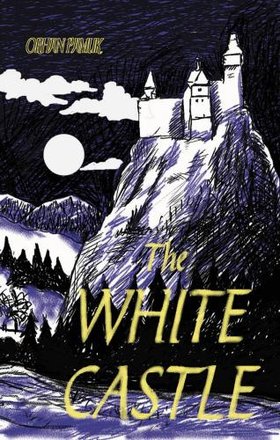
This book is a fable, an Italian traveler is enslaved in Ottoman Istanbul in the 16th Century. His western knowledge, particularly anatomy, sets him apart, first as a doctor and later as an engineer.
The pasha who owns him gives him to Hoja, because the two men, the unnamed slave and the master (Hoja), look a great deal alike. Hoja is a scientist-engineer employed by the pasha and the slave becomes his assistant. They work on several projects, including fireworks. The pasha strives for recognition from the Sultan, Hoja strives for promotion. Much striving.
One theme is identity given the resemblance of the two men and their incessant exchange of information for some years, some of it personal. Another theme is the resistance of the Ottoman world to change, as represented by scientific knowledge both imported from the West in the slave but also as generated by Hoja.
The third, the governing theme, is the master-slave dialectic. The slave becomes like the master first but in time the master becomes like the slave. At the end it is not clear who is narrating the slave who has assumed the identity of the master, or the master who pines for the slave (his European knowledge) as his alter-ego. Are Turks Asians or Europeans?
Then there is the unreliable narrator beloved of post modern writers but not readers.
 Orhan Pamuk, Nobel Prize winner in Literature.
Orhan Pamuk, Nobel Prize winner in Literature.
But I fear that it is not particularly interesting to read. It is well written but seems lifeless, as though the plan was drawn up on a white board and then executed in neat chunks. The author is aloof, detached from it all framing the story as the finding of a third party.
Puncture: A Dance through time and place.
A combined performance of Legs on the Wall, Vox, and the Sydney Philharmonia Choirs for the Sydney Festival 2015 at the Riverside Theatre in Parramatta. I went to a matinee to see the alto do her stuff. I class this entry as a Film Review for my convenience.
 The lobby card.
The lobby card.
What singing! What energy! What colour and movement? And some of it was in black-and-white, too. It had everything.
 The Riverside Theatre, the one in Parramatta, not Milwaukee or San Francisco.
The Riverside Theatre, the one in Parramatta, not Milwaukee or San Francisco.
It is presented as one continuous piece with breaks for applause. There were several distinct parts. The opening reminded me of ‘West Side Story,’ later there was a one-note ’Space Odyssey,’ a soprano ascendant, a Strauss waltz, lost souls in the haze à la Dante’s ‘Inferno,’ some aerial fish on harnesses, and — best for last — a superb, creative use of iPhone cameras which I thought was delightful, and apt with the app! All done in about an hour.
The black-and-white were shadows projected on the wall. Having recently seen the relevant episode of ‘Rectify’ I agreed, Plato was on to something. [You either get it or you don’t.]
Wait there is more! The audience entered through the tradesman’s door and snaked down a maze of hallways to sit on the stage with the performers. I had already instructed me to seek the high ground and I found out why later. In stagecraft-speak that is supposed to break down the barrier between audience and performer. Hmm. Reduce it yes, conceded.
This piece has been the Sydney Festival for 2015 for us. Kate has had numerous rehearsal with much get ready and wait along with seven (7) performances, sequins and all in the haze.
It was blisteringly hot day in the centre of Sydney, Parramatta being the geographical and historical centre of the greater Sydney metropolitan area.
 The red flag at the top edge centre left is the Sydney CBD with Parramatta in foreground.
The red flag at the top edge centre left is the Sydney CBD with Parramatta in foreground.
I took the train back to Newtown, glad of the air conditioning on board. Kate had to stay for the evening performance, returning much later ready for a large one.
‘Life Itself’ (2014) Recommended.
As this nerd’s tribute to another nerd, I left my desk this morning to ride Bus 352 to the Chauvel theatre in Paddington to see Roger Ebert in ‘Life Itself.’
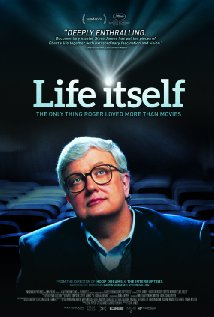
A movie is a machine for transmitting empathy by telling the stories of other people, of other times, and of other places … and there we find something of ourselves and we experience it in the silent company of hundreds of others. No, we are not alone. Call that an Ebertism. I am sure he said something like that but I could not track it down.
The movie chronicles Ebert from cradle to grave, the small town mid-western only child who made his way in the big wide world. At the University of Illinois he worked his way up to editor the ‘Illini Daily’ where he rose to the occasion in November 1963. (By the way, I loved seeing that two-storey printing presses, the rumble of which is heard streets away.)
The essential loneliness of the man is inescapable in his earlier years, here portrayed as his salad days, the life of the party with no home and no one to go home to, drinking all night and eating like a pig, and he poured himself into his typewriter.
That Ebert was awarded a Pulitzer Prize for his movie reviews is noted and mentioned a couple of times, but nothing is said about why he got it. A quotation from the citation would have been valuable. It was remarkable that a film reviewer would receive such an accolade. Still is.

One of the major themes has to be the odd coupling with Gene Siskel. They were from different worlds, and found little in common. If they bickered on screen, they positively reviled one another off it. Though even some of that seemed forced yet it was amusing to watch the out-takes, boys being bad boys because it was expected of them.
Film literati never accepted Ebert and hated the influence he gained with audiences and indeed directors and studios. His most egregious failing was that he did not write in the inscrutable, closed, self-referential way beloved of Cultural Studies. I think of all those films made for other film directors lovingly reviewed in the ‘The Story of Film: an Odyssey’ (2011). (A documentary film reviewed elsewhere on the this blog.) Ebert cut through all of that.
Whenever I see a movie I like, I check the Ebert archive in the hope that he wrote about it, putting into words some of the things that occurred to me and, more importantly, putting into words things that did not occur to me at all.
This is the man who recognised Martin Scorsese’s genius in ‘I Call First’ (1967), who searched out and encouraged independent film makers like Errol Morris, reviewed documentaries as if they were feature film when other reviewers ignored documentaries, and made subtitled movies acceptable to an ever larger audience. Credit where credit it due.
By the way ‘I Call First’ was retitled ‘Who is that knocking at my door’ when it got a wide release thanks to Ebert’s push. His battles to review independent films with little or no theatrical release is more than enough to make the case that he expanded the realm, likewise, his thinly disguised efforts to review some obscure film three times to give it exposure. Siskel played a part in all of this, too, but is not given credit for it in these 120 minutes. No time, I guess. See my comment on length at the end.
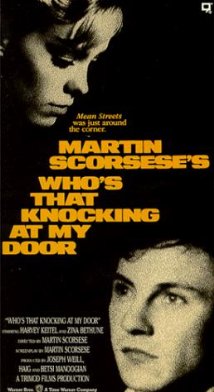
Among the many likeable moments in the documentary are these:
Martin Scorsese’s perplexed reaction, even years later, to a bad review from Ebert was delicious. Not only did Ebert start Scorsese’s career but he resurrected it once, but even so he did not like ‘The Color of Money’ and said so.
The continental tensions with the rulers of popular culture in Los Angeles and New York City who ignored those two guys living in a movie house in Chicago for years and years. (I always thought they lived there anyway.)
His abiding loyalty to the working class ‘Chicago Sun Times’ and its readership even under the baleful influence of Rupert Murdoch’s ownership was staunch. It gave him his start and he repaid that everyday.
Werner Herzog’s description, delivered in the thick overcoat of a German accent, of Ebert as a comrade wounded in action who soldiers on was charming, grim, and exact.
Richard Corliss of ‘Time’ magazine eating the words of some of his early attacks on Ebert’s approach to reviewing. Too down market for the young Corliss. An older and wiser Corliss sees a bigger picture now, or having made his career, Corliss perhaps now has no need any longer to attract attention by attacking an established figure.
The recitation of the last page of ‘The Great Gatsby,’ ‘Most of the shore places were now closed…[get it and read it for yourself].’ A dirge to be sure, but ‘Gatsby believed in the green light.’ So did Roger Ebert. Find and follow the green light….
Art mirrors life but it need not reproduce it, as Ebert said more than once. There was about 30 minutes too much of life in the film for this viewer, the grieving wife, the loving grandchildren, the lingering camera shot to wring every last drop of emotion from the take, enough already!
I enjoyed leaving my well beaten paths for a while today, but I won’t make a habit of it! I have footnotes to go and chapters to write before I play hookey again.
‘L’Âge des ténébres’ (2007)
A Walter MItty story set in contemporary Montréal. Jean-Marc lives a downward spiral in a world that is collapsing all around. To escape he daydreams, nightdreams, afternoon dreams his life away, enduring an impossible job, a loveless marriage, a daily trek to be demeaned at the office while being incapable of assisting any taxpayer who comes to him for assistance. It is a well worn franchise, this story but it is handled with vigour and imagination. If the whole does not compute, many of the parts are great fun, some of them instantly recognisable.
For instance, the committee meeting of ten to explain to Jean-Marc that ‘negro’ is a non-word in his first official disciplinary warning. The elaborate methods of the smokers to avoid the anti-smoking patrols. Yes, security guards with dogs on anti-smoking patrols. Then there is the singular Montréal touch, that Olympic stadium white elephant. Though no government in fifty (50) years has a found a use for that monument to the ego of Mayor Jean Drapeau, Denys Arcand has: government social services offices.

Why not, a billion tax dollars went into that monstrosity at the end of the metro. It is has been cited in every other Olympic bid as an example of what not to do.
Of course the functionaries have little time to deliver social services since they are constantly in meetings to hammer each other very politely with a host of conflicting and contradictory rules, to be motivated even if depressed and dispirited by Humour Quebec, to be trained in the latest trivial tweak to the meaningless rules, planning how to cut the next budget, and scheduling the next meetings. See, I said instantly recognisable.
His daydreams about revenge on his line manager and the supervisor….
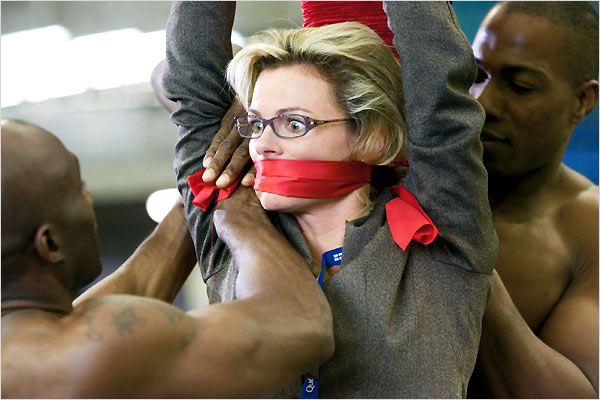 The prince’s minions at work.
The prince’s minions at work.
Well that prince of equatorial origin is famous for his cruelty. Seeing a Roman emperor dragging on a cigarette, that is worth the price of admission.
His imaginary girlfriend’s anger at being the dream girl for such a loser, ouch, that hurt! But she did not seem to mind his other fantasy women.
 The harem.
The harem.
The high-powered wife is a caricature, to be sure, but then so is everything and everyone else. The news on the radio, television, and newspapers is one downer after another. Everyone wears surgical masks in public because of an unfathomable disease that the authorities cannot control. The commuter train, which breaks down everyday, is repaired by the driver with a sledge hammer. The metro is packed with unpleasant people. Criminals with guns are released on technicalities that no one understands. Gangs roam the streets at night. The sky will be falling soon. This is not a Montréal for tourists.
Perhaps thanks to a chance meeting with another fantasist, and more importantly the death of his mother, Jean-Marc is jarred out of his mind world. He leaves home just when his wife returns. I started to type ‘estranged’ wife but their relationship is not close enough to become estranged. He banishes his dream girl with the recriminations of a long married couple. By the way the earlier shower scene with the reference to American film classifications lets us all in on the joke.
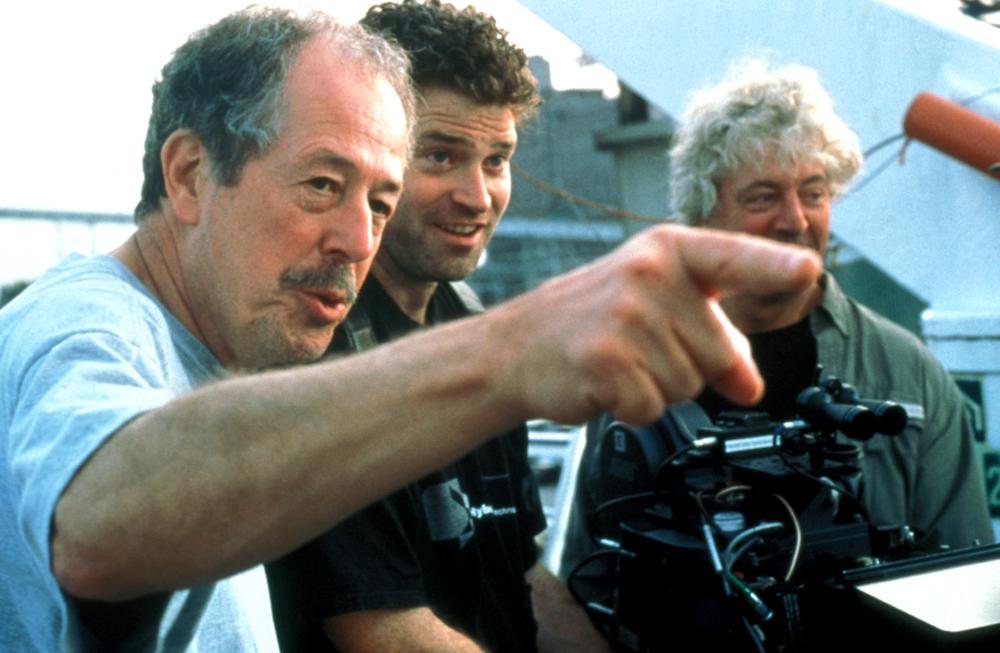 Denys Arcand gesturing. A great talent, this one with a string of thoughtful and memorable films including ‘Jesus of Montréal,’ ‘Decline of the American Empire,’ and ‘The Barbarian Invasion.’
Denys Arcand gesturing. A great talent, this one with a string of thoughtful and memorable films including ‘Jesus of Montréal,’ ‘Decline of the American Empire,’ and ‘The Barbarian Invasion.’
Recorded from SBS and watched later. The title ‘L’Âge des ténébres’ is literally the Dark Ages, but for reasons best know to themselves the SBS producers called it ‘Days of Darkness.’
